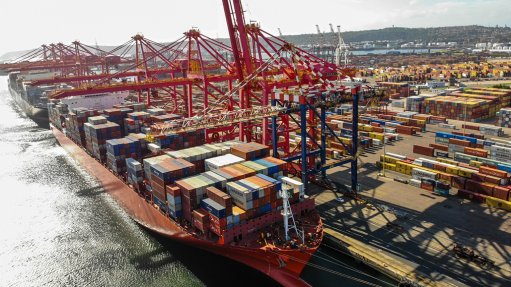SA power grid would not cope if entire taxi fleet were to be electric
Eskom is currently unable to service South Africa’s electricity demand and is unlikely to do so in the foreseeable future, says Stellenbosch University (SU) Faculty of Engineering Chair in the Internet of Things Professor Thinus Booysen.
This short supply is problematic not only for the economy, but also when considering the strong global move towards electric vehicles (EVs) evident in markets such as Europe, he notes.
Booysen is part of a consortium led by Transitec and consisting of SU, Oxford University and Nodalis, which aims to evaluate the impact of decarbonising South Africa’s minibus taxi sector through the electrification of internal combustion engine (ICE) vehicles.
An earlier South African government-funded study indicated that the country’s minibus taxi fleet may be an ideal target for the impending changeover to electric propulsion.
“I don’t think there is a point in saying that EVs are not coming,” says Booysen. “It’s very clear they are coming and, if we don’t adapt, we may be cut off from the market, especially in terms of vehicle and component manufacturing.”
The problem, however, is that South Africa can only rely on 24 GW of readily available energy, despite Eskom’s installed capacity of 48 GW, owing to plant breakdowns and other failures, says Booysen.
Also, about 70% of Eskom’s energy production is coal based, which largely negates the notion of zero-emission EVs.
When considering that a typical minibus taxi travels about 228 km a day (according to a Western Cape-based study), that it has an aggregate stop period of 7.7 to 10.6 hours a day during which it recharges and that a charger of 32 kW or more would be required to keep an electric taxi going during the desired operating hours, South Africa’s fleet of minibus taxis would use about 10% of Eskom’s installed generation capacity, says Booysen, which would put untenable strain on the already struggling electricity grid.
The taxi fleet is currently estimated to comprise between 250 000 and 300 000 vehicles, out of a vehicle parc of roughly 12-million vehicles in the country.
Installing solar panels at taxi ranks would also not solve this energy conundrum, as half a tennis court of solar panels, without storage, would only be sufficient for one average taxi’s energy requirements, 50% of the time.
Without storage, there is a temporal mismatch, notes Booysen, especially as renewable energy is normally not available when charging is needed, with one exception being the middle of the day.
Booysen also believes it is unlikely that minibus taxi owners would charge their vehicles during low-demand periods, such as night time, as they would probably do so as soon as they arrive home, similar to what he expects private EVs users to do – unless municipalities implement time-of-day charging or charging controllers to force EV owners into more energy-friendly behaviour patterns.
The migration from ICEs to EVs is indeed gaining traction, adds Intelligent Transport Society of South Africa CEO Dr Paul Vorster.
“One opportunity often highlighted to reduce emissions and grow the EV fleet is to electrify South Africa’s minibus taxi fleet.
“However, with precarious electricity supply and rolling blackouts already so prevalent prior to an expected increase in EVs, the potential stress this will place on South Africa’s electricity grid requires much closer scrutiny.”
The charging requirements of an EV minibus taxi fleet also point to the urgency of “dramatically ramping up” a stable and reliable supply of clean solar energy, notes Vorster.
“Without this, the grid risks being swamped by EV charging.”
Comments
Press Office
Announcements
What's On
Subscribe to improve your user experience...
Option 1 (equivalent of R125 a month):
Receive a weekly copy of Creamer Media's Engineering News & Mining Weekly magazine
(print copy for those in South Africa and e-magazine for those outside of South Africa)
Receive daily email newsletters
Access to full search results
Access archive of magazine back copies
Access to Projects in Progress
Access to ONE Research Report of your choice in PDF format
Option 2 (equivalent of R375 a month):
All benefits from Option 1
PLUS
Access to Creamer Media's Research Channel Africa for ALL Research Reports, in PDF format, on various industrial and mining sectors
including Electricity; Water; Energy Transition; Hydrogen; Roads, Rail and Ports; Coal; Gold; Platinum; Battery Metals; etc.
Already a subscriber?
Forgotten your password?
Receive weekly copy of Creamer Media's Engineering News & Mining Weekly magazine (print copy for those in South Africa and e-magazine for those outside of South Africa)
➕
Recieve daily email newsletters
➕
Access to full search results
➕
Access archive of magazine back copies
➕
Access to Projects in Progress
➕
Access to ONE Research Report of your choice in PDF format
RESEARCH CHANNEL AFRICA
R4500 (equivalent of R375 a month)
SUBSCRIBEAll benefits from Option 1
➕
Access to Creamer Media's Research Channel Africa for ALL Research Reports on various industrial and mining sectors, in PDF format, including on:
Electricity
➕
Water
➕
Energy Transition
➕
Hydrogen
➕
Roads, Rail and Ports
➕
Coal
➕
Gold
➕
Platinum
➕
Battery Metals
➕
etc.
Receive all benefits from Option 1 or Option 2 delivered to numerous people at your company
➕
Multiple User names and Passwords for simultaneous log-ins
➕
Intranet integration access to all in your organisation


















